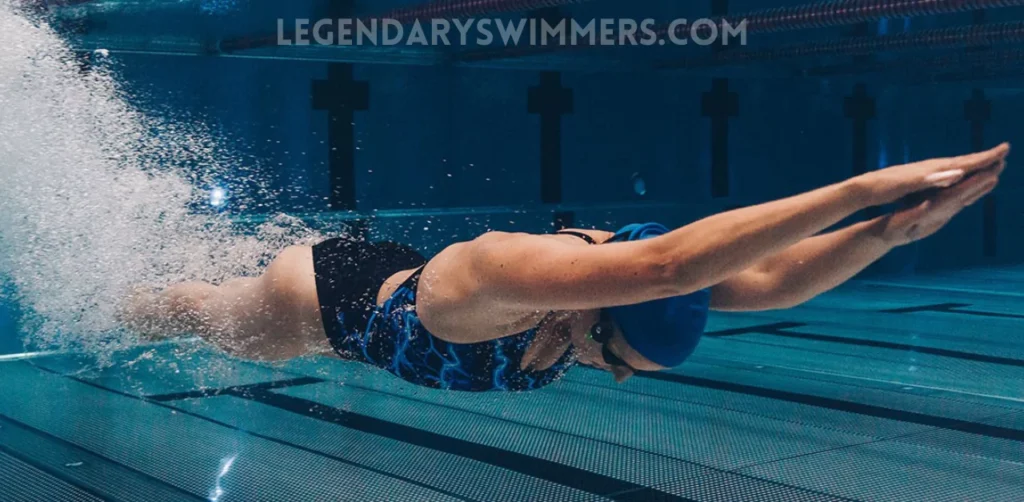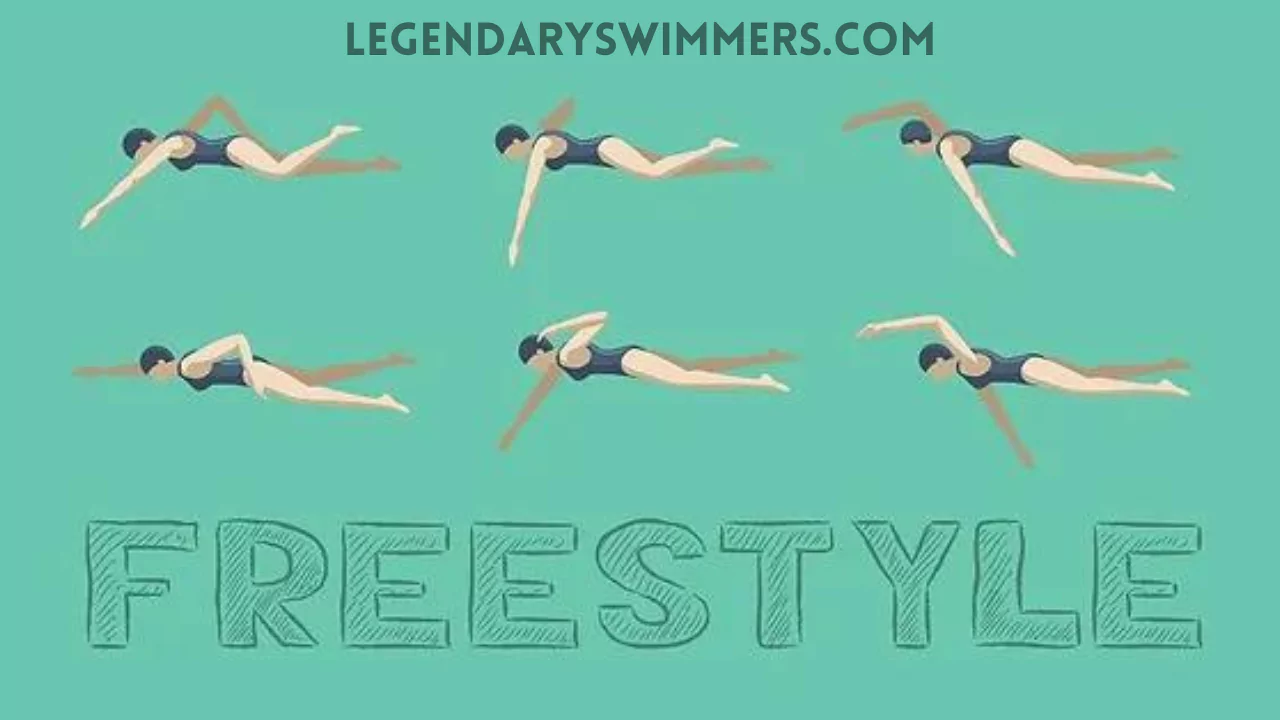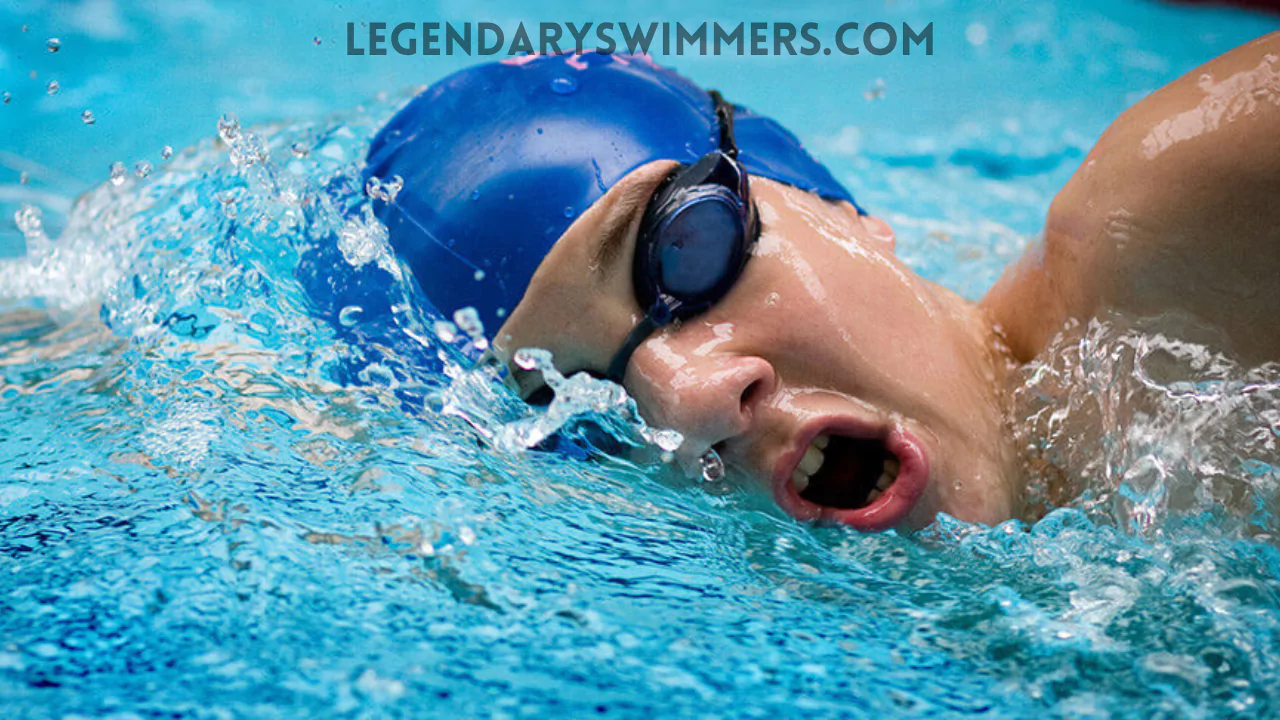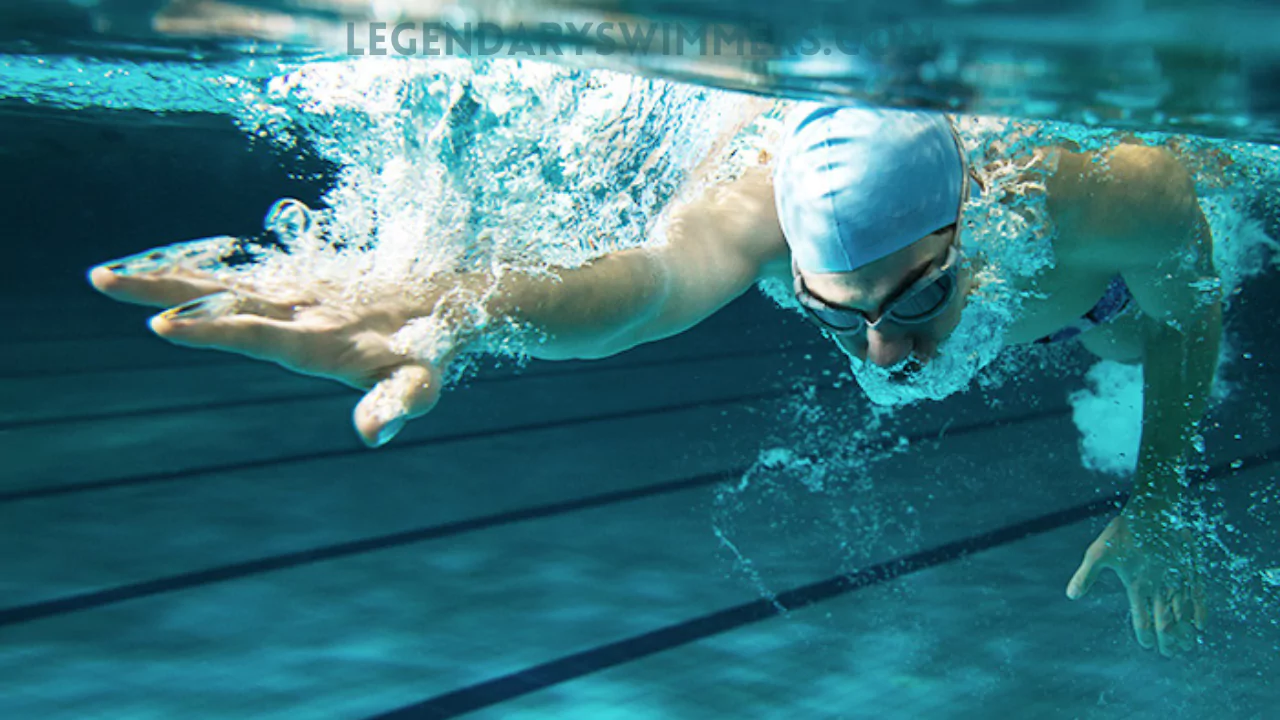
How to Swim Freestyle Like a Pro: Techniques and Tips (2025)
- Updated:
Freestyle swimming, often called the front crawl, is one of the most popular and fastest swimming strokes. Whether you are swimming for competition, exercise, or leisure, mastering the freestyle style can greatly enhance your swimming experience.
Swimmers use a combination of arm strokes and leg kicks to propel themselves through the water. The arms move in a windmill motion while the legs perform a flutter kick, allowing for maximum propulsion. This stroke is not only the fastest but also one of the most efficient swimming styles. In this guide, we will delve deep into everything you need to know about freestyle swimming, its benefits, techniques, and tips for improvement.
Importance of Freestyle in Competitive Swimming and Leisure
In competitive swimming, freestyle events dominate the Olympic Games and various championships. For leisure swimmers, mastering this stroke enhances enjoyment in water sports, promotes fitness, and builds confidence. Understanding the freestyle swimming style can be a game-changer, making your time in the water more productive and enjoyable.
A report from the American College of Sports Medicine indicates that regular swimming can lead to enhanced aerobic capacity (Source: ACSM).
Benefits of Freestyle Swimming
Health Benefits
Freestyle swimming provides a comprehensive full-body workout, targeting various muscle groups and enhancing both cardiovascular health and muscular strength. Consistent practice can yield substantial benefits, including boosted endurance, effective weight management, and enhanced muscle toning.
Swimming helps develop stamina and increases lung capacity, leading to improved endurance. The calorie-burning nature of swimming aids in weight control and can be a valuable tool for maintaining a healthy body composition. By engaging core muscles, arms, and legs, freestyle swimming contributes to a toned and sculpted physique
Mental Benefits
Swimming offers significant mental health advantages. It can reduce stress and anxiety, enhance focus, and provide a meditative experience. The rhythmic nature of freestyle swimming can lead to a state of flow, promoting mental clarity and relaxation.
Why Women Should Try Freestyle Swimming
Women can particularly benefit from freestyle swimming. It offers an empowering way to stay fit, build confidence, and join a supportive community. The stroke’s flexibility allows women to adapt techniques based on their unique body types and strengths. Whether you’re a beginner or an experienced swimmer, incorporating freestyle into your routine can lead to profound personal growth and achievement.
According to Dr. David G. Pyne, a sports scientist and swimming coach, “Women should embrace their unique strengths and adjust their swimming style accordingly. Whether it’s focusing on technique, stamina, or speed, individualized training can lead to significant improvements and more enjoyment in the water” (Source: Swimming Science).
A 155-pound woman can burn approximately 400 calories in just 30 minutes of vigorous freestyle swimming, making it an effective exercise for weight management (Source: Harvard Health).
How to Swim the Freestyle Stroke

Mastering the freestyle stroke is essential for anyone looking to swim efficiently and effectively. Understanding the key components can significantly enhance your performance in the water.
Key Components of the Freestyle Stroke
Arm Movement
Freestyle swimming employs an alternating arm stroke, which is crucial for propulsion. Here’s a breakdown of the movement:
- Entry: Extend one arm forward, keeping it straight and entering the water at shoulder width. The hand should enter the water at a slight angle, not straight down.
- Catch: As the hand enters the water, maintain a slight bend in the elbow to initiate the catch phase. Your fingers should point downward, and the slight bend will ensure your elbow stays higher than your hand.
- Pull: Pull the arm down and back in a sweeping motion. Keep the hand relaxed and push water toward your feet. This phase is critical for generating speed.
- Recovery: After the pull, lift the elbow and bring the arm back over the water to enter again. The recovery should be relaxed and quick, with fingers pointed forward.
Expert Insight: Coach Bob Bowman, known for training Olympic swimmers, emphasizes the importance of the catch phase. “A strong catch can propel you forward with minimal effort. Focus on getting your hand in the right position early,” he advises (source: Swimming World Magazine).
Leg Movement
The flutter kick provides additional propulsion and stability in the water. Here’s how to execute it effectively:
- Leg Position: Keep your legs straight but relaxed, with a slight bend at the knees. Avoid kicking from the knees; instead, initiate the movement from the hips.
- Kick Technique: The kick should be quick and continuous, with small, fast movements. Think of it as a rhythmic motion rather than large splashes.
- Body Integration: The kick should align with your arm strokes; for every pull, there should be a corresponding kick.
Many swimmers find that practising kicks on a kickboard helps isolate leg movements and improve coordination. This simple drill can boost confidence and enhance overall technique.
Body Position
Maintaining a streamlined body position is crucial for minimizing drag and maximizing efficiency. Here’s how to achieve it:
- Alignment: Look slightly forward or directly down to help keep your hips at the surface of the water. This positioning ensures better body alignment and helps maintain a streamlined position as you swim.
- Core Engagement: Tighten your core muscles to maintain a flat, horizontal position. A strong core stabilizes your body and reduces resistance.
- Streamline: Your body should form a straight line from head to toes. Avoid excessive movements that could disrupt your streamlined position.
Expert Review: Swim coach and physiologist Dr. Greg Whyte states, “The body position is often overlooked but is crucial for efficiency. Swimmers should practice drills that promote good posture in the water” (source: BBC Sport).
Tailored Techniques for Women
Women may find that slight adjustments in technique can improve their comfort and effectiveness in the water. Here are some tailored techniques:
- Arm Flexibility: Women often have different shoulder mobility than men. Emphasizing flexibility in arm movements can help prevent injury and enhance range of motion. Stretching and strength training for the shoulders are beneficial.
- Breath Control:
Factors like shoulder width, lung capacity, and overall body composition can influence breathing techniques in women. For instance, those with narrower shoulders might find a different rhythm or pattern that feels more comfortable.
Bilateral breathing is definitely a great practice, as it helps with balance in the water, but you might also want to experiment with when you breathe during strokes. Some women may find that breathing every two strokes works well, while others might prefer three.
- Body Position Adaptations: Women with shorter torsos may need to adjust their body position slightly to keep their hips at the surface. Focusing on engaging the core can help maintain proper alignment.
Many women report that swimming in a supportive environment, such as women-only swim classes, enhances their confidence and allows them to focus on mastering the freestyle technique without the pressure of mixed-gender settings.
Breathing Techniques While Swimming Freestyle

Breathing is crucial for efficient freestyle swimming. It allows swimmers to maintain stamina and avoid fatigue. The key is to develop a rhythmic breathing pattern that complements the stroke.
How to Breathe When Swimming Freestyle
| Breathing Technique | Description | Benefits |
|---|---|---|
| Bilateral Breathing | Alternate breathing on both sides to promote balance and symmetry. | – Enhances balance in the stroke – Prevents over-reliance on one side |
| Timing | Inhale quickly as the head turns to the side; exhale underwater for a smooth flow. | – Maintains a steady rhythm – Improves overall technique |
How to Breathe During Freestyle Swimming
To ensure that your breathing technique does not disrupt your stroke, consider the following tips:
- Exhale Through Your Nose: Practicing exhaling through your nose while underwater is crucial. This technique helps maintain a steady rhythm and reduces the likelihood of inhaling water when turning your head to breathe.
- Focus on Relaxation: Staying relaxed while breathing is essential. Tension can lead to inefficient movements and fatigue. Practicing mindfulness and staying calm while swimming can enhance your overall experience.
- Head Position: When turning your head to breathe, aim to keep it low in the water. Your mouth should just clear the surface, which minimizes disruption to your body position and helps maintain a streamlined form.
Expert Review: Swim coach and Olympic medalist Natalie Coughlin advises, “Your head position while breathing is critical. Keep your head low and just above the water’s surface to maintain your streamlined position and conserve energy” (source: USA Swimming).
Kicking for Freestyle Swimming
The flutter kick is essential for propulsion in freestyle swimming. Here’s how to execute it properly:
Leg Position
Leg position is crucial for efficient freestyle swimming. Keep your legs straight but not rigid, slightly relaxing your knees to avoid tension. Point your toes throughout the kick, not only to streamline your body but also to reduce drag in the water.
Engaging your calf muscles can aid in achieving the right toe position. Maintaining flexibility in your ankles allows for a more efficient kick. Think of your feet as extensions of your legs, moving fluidly with the water.
Kick from the Hips
The power of the flutter kick originates from the hips, not the knees. Avoid excessive knee bending, as it can create drag and hinder your speed. Initiate the kick from the hip joint, allowing your legs to follow through in a gentle up-and-down motion. Instead of large, sweeping motions, focus on small, rapid kicks to maintain a continuous flow and ensure your body remains aligned and streamlined.
Specific Tips for Women’s Kicking Techniques
Women can experience unique advantages in freestyle swimming by incorporating specific strategies to improve their kicking technique. Here are some tailored tips to enhance performance:
1. Incorporate Flexibility Exercises
Incorporating flexibility exercises is essential for achieving an effective flutter kick in freestyle swimming. Start with dynamic stretching before your swim—leg swings and high knees are excellent for targeting the hip flexors, hamstrings, and quadriceps. This increases blood flow and prepares your muscles for movement, enhancing kicking efficiency.
After swimming, focus on static stretches like seated forward bends and lunges to improve hip and leg flexibility. Concentrating on these areas helps reduce tightness that can restrict movement, leading to a more effective kick. Aim to hold each stretch for 20-30 seconds to allow your muscles to relax and lengthen.
2. Strengthen the Hip Flexors
Strong hip flexors contribute to a more powerful and efficient kick. Here are some exercises to build strength:
- Leg Lifts: Lie on your back and lift one leg at a time while keeping the other flat on the ground. This exercise targets the hip flexors and improves muscle coordination. As you progress, you can add resistance, such as ankle weights, to increase the challenge.
- Mountain Climbers: In a plank position, alternately bring your knees up towards your chest. This dynamic movement strengthens the hip flexors and core simultaneously, enhancing your overall stability in the water. Mountain climbers also improve cardiovascular fitness, which is beneficial for endurance swimming.
- Resistance Band Kicks: Attach a resistance band to a stable surface, place it around your ankles, and practice flutter kicks. This adds resistance and builds strength in the kicking motion, making your legs more powerful during actual swimming. It’s an excellent way to simulate the kicking effort required while swimming.
3. Practice a Fluid Kick
Achieving a smooth, rhythmic flutter kick can enhance propulsion and reduce drag. Consider these tips:
- Focus on Timing: Coordinate your kick with your arm movements. Aim for a steady rhythm that flows naturally with your stroke, allowing both parts to complement each other. When your arms enter the water, your legs should also kick, creating a seamless motion that enhances your overall speed.
- Visualize: While swimming, visualize your legs moving through the water in a fluid motion, as if gliding. This mental imagery can help you achieve a more relaxed and effective kick. Visualization techniques have been shown to improve performance by enhancing motor skills and reducing anxiety during competition.
- Minimize Splash: Pay attention to the surface of the water. A fluid kick should produce minimal splashes, indicating that your legs are moving efficiently without excessive force. Splashing can create drag, which slows you down; therefore, focus on making controlled, deliberate movements with your legs.
How to Be Faster at Freestyle Swimming

Incorporating interval training is a proven method to enhance speed and endurance in freestyle swimming. By alternating between high-intensity bursts and periods of rest, you can train your body to swim faster for longer periods.
1. Body Position:
Maintaining a streamlined body position is crucial for reducing drag and increasing propulsion. Ensure your elbow is high and close to your body as you enter the water. This allows you to catch more water and generate more power. Rotate your body from side to side, using your core muscles to power your stroke. This helps you maintain a long, efficient stroke.
Expert Insight: According to [Michael Phelps], one of the greatest swimmers of all time, “Body position is everything in freestyle. If you’re not streamlined, you’re fighting against yourself.”
2. Arm Technique
A powerful and efficient arm stroke is essential for swimming fast.
Keep your elbow high during the recovery phase of your stroke. This helps you maintain a strong and powerful entry. Focus on pulling the water back and down, using your entire arm and shoulder muscles.
Expert Insight: [Katie Ledecky], a world-record holder in freestyle swimming, emphasizes the importance of a strong and powerful pull. “I focus on pulling the water back and down, using my entire arm and shoulder muscles.”
Common Challenges and Solutions
How to Fix Sinking Legs When Swimming Freestyle
To fix sinking legs in freestyle, focus on strengthening your legs, improving your kick technique, maintaining a streamlined body position, practicing proper breathing, and seeking professional guidance. By addressing these areas, you can effectively improve your leg buoyancy and enhance your overall freestyle swimming performance.
How to Get Better at Freestyle Swimming
To get better at freestyle swimming, focus on refining your technique and building endurance. Maintain a streamlined body position and practice bilateral breathing to keep balance. Work on your arm movements, ensuring a high elbow during the pull phase, and use a flutter kick that originates from your hips. Incorporate interval training to boost stamina and strength training for core and shoulder stability.
Regular practice is key, so swim consistently while seeking feedback from a coach or experienced swimmer. Most importantly, enjoy the process and have fun in the water!
Freestyle Swimming Style in Competitions
Competitive freestyle swimming differs from practice in several ways:
- Starts and Turns: Mastering dive starts and flip turns is crucial, as these elements can significantly impact race times. According to USA Swimming, a strong start can shave valuable seconds off your performance (source: USA Swimming).
- Pacing Strategies: Effective energy management throughout races is vital. Swimmers should learn to find their optimal pacing to avoid fatigue while maximizing speed. Personal experience shows that incorporating interval training helps in building this stamina and pacing awareness.
Strategies for Competitive Female Swimmers
it’s particularly beneficial to build a strong support network and engage in regular training sessions. Joining clubs not only provides access to coaching and resources but also fosters camaraderie and motivation.
Statistics indicate that female swimmers who train in teams often experience improved performance due to social support and shared goals (source: Journal of Sports Sciences).
Looking to elevate your competitive freestyle skills? Head over to LegendarySwimmers.com to help swimmers of all levels achieve their full potential. Our comprehensive resources cover everything from mastering starts and turns to developing optimal pacing strategies tailored specifically for female swimmers as well. Start your journey to becoming a legendary swimmer today!
Faqs:
1. What is freestyle swimming?
Freestyle swimming, often referred to as the front crawl, is one of the fastest and most popular swimming strokes. It involves a combination of alternating arm movements and a flutter kick to propel the swimmer forward efficiently.
2. What are the health benefits of freestyle swimming?
Freestyle swimming offers a full-body workout, improving cardiovascular health, muscular strength, and endurance. It can also aid in weight management and muscle toning while enhancing lung capacity and overall fitness.
3. How do I improve my freestyle technique?
To improve your freestyle, focus on refining your arm strokes, maintaining a streamlined body position, and practicing bilateral breathing. Regularly incorporate interval training to boost endurance and speed.
4. What are some common challenges in freestyle swimming?
Common challenges include sinking legs, inefficient breathing, and improper kick technique. Addressing these issues involves strengthening leg muscles, practicing proper body alignment, and working on a rhythmic breathing pattern.
5. Why is body position important in freestyle swimming?
Maintaining a streamlined body position reduces drag and increases propulsion. Keeping your head in line with your spine and engaging your core is essential for efficient swimming.
6. How can women adapt their freestyle techniques?
Women can benefit from adjusting their arm flexibility, breathing patterns, and body positioning based on individual strengths. Incorporating supportive environments, such as women-only swim classes, can also boost confidence and comfort in the water.
7. What resources are available to enhance my freestyle skills?
You can explore comprehensive resources at LegendarySwimmers.com, which provides guidance on mastering starts and turns, developing pacing strategies, and improving overall freestyle techniques. Additionally, we only promote essential swimming products like kickboards, swim goggles, and swim caps to enhance your training experience.
8. How can I swim 50m freestyle in 25 seconds?
Achieving a 25-second time for 50m freestyle requires targeted training and technique refinement. Exercises like planks, push-ups, and resistance training can enhance your power and stability in the water.
Additional Resources:
- USA Swimming: The governing body of swimming in the United States, offering information, resources, and events.
- Master Swimmers USA: A national organization for adult swimmers of all levels, providing opportunities for training, competition, and social engagement.
- Swim Lessons
- Swimming World Magazine
- Harvard Health

Natasha Nicole Leyva
Hi, I’m Natasha—swimmer, coach, and aquatic fitness enthusiast. My journey began in New Zealand after a professor recommended swimming to help with a knee injury. The low-impact nature of swimming worked wonders, and it quickly became my favorite form of exercise. This passion grew into a thriving swim academy, and soon, requests for aquatic fitness classes started pouring in. After becoming certified, I realized how powerful water workouts could be for recovery and fitness. Now, I share my expertise here to help others experience the benefits of aquatic movement—whether for recovery, fitness, or fun!






